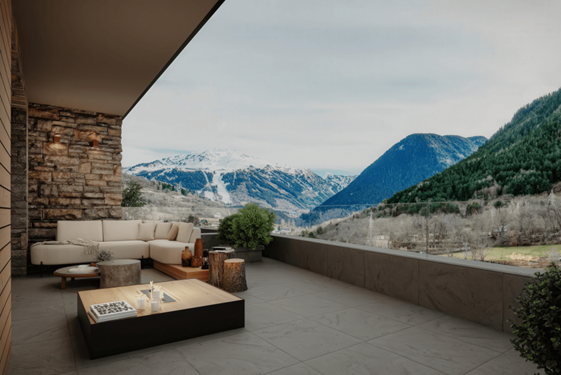
Co-ownership of luxury homes is increasingly popular in the Spanish real estate market. In Baqueira Beret, one of the Pyrenees’ most exclusive destinations, this model now accounts for 5% of prime-segment sales, according to Vivla, which currently manages 22 properties under this system in the area.
The co-ownership model allows buyers to acquire a share of a property (from 1/8 to 1/2), guaranteeing several weeks of use per year while delegating full management to an operator. This approach responds to changing holiday home habits, combining investment with flexible use.
Vivla CEO Carlos Gómez explains that the model “demonstrates how homeowners want to enjoy exclusive residences without the burdens of traditional ownership.” He adds that it “reduces unnecessary construction and helps keep homes occupied year-round.”
Baqueira, epicentre of luxury mountain housing
The real estate market in Baqueira is enjoying a boom. In August 2025, the average price reached €7,210 per square metre, marking a 28.9% year-on-year increase. The most exclusive properties range from €940,000 to €3.2 million, with high demand cementing the valley’s reputation as a top destination for second homes.
Vivla reports that co-owned properties generate annual returns of around 10%, combining capital appreciation with rental income from unused weeks. Occupancy reaches 100% during the ski season and around 94% in summer, highlighting the growing popularity of the mountains as a year-round holiday destination.
Expansion into new destinations
The co-ownership model is also expanding across Spain. VIVLA currently manages 63 properties in destinations such as Ibiza, Menorca, Cantabria and the Costa del Sol, and has recently entered urban markets with a collection of homes in Madrid’s Salamanca and Justicia districts.
These residences, each over 200 square metres and priced above €3 million, can be purchased in shares starting from around €485,000, offering six weeks of guaranteed annual use.
This market evolution reflects a shift in how second homes are perceived: shared, flexible and professionally managed, catering to a more mobile lifestyle and moving away from traditional full ownership.
